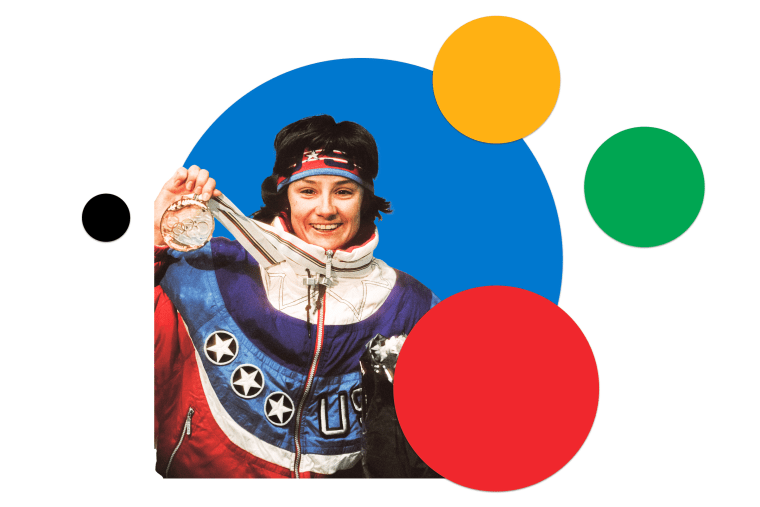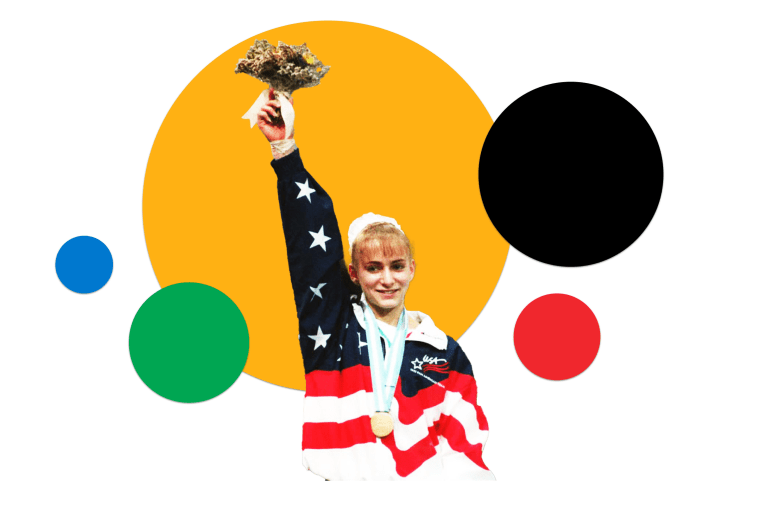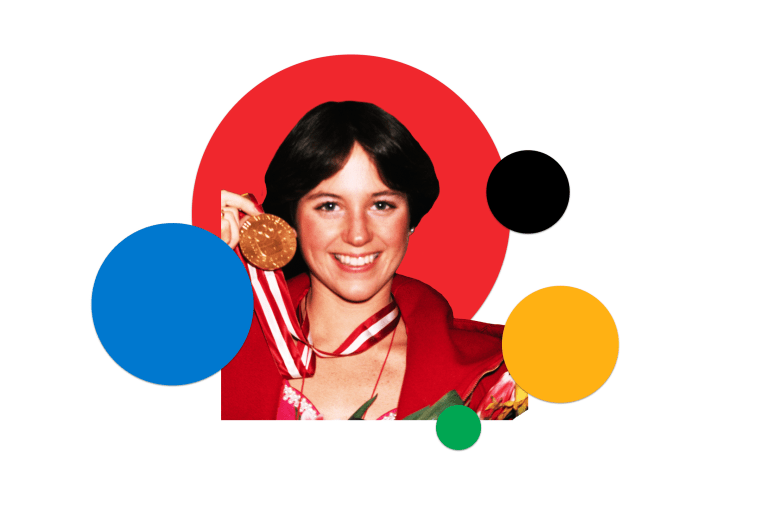“It’s kind of the heart of the Olympic Village,” Boitano said. Kenworthy, who most recently competed for England at the 2022 Beijing Games, agreed: “The kitchen is the heart of the home, and it’s that way at the Olympics.”
Hannah Roberts, who earned a silver medal in BMX freestyle at the Covid-era 2020 Tokyo Games, discovered that the cafeteria was already crammed with athletes as early as 4 a.m. “I was like, oh my goodness. You can’t get a space,” Roberts told the NBC Sports podcast “In The Village” in 2021.
Bonnie Blair, a gold medalist speed skater who competed at four Olympic Games over a 10-year period, described feeling like “a kid in a candy store” when she first walked into the dining hall at the 1984 Sarajevo Games.

“I just wanted to go to the cafeteria and sometimes I could hang out there for hours, because that’s where all the athletes were — athletes from other sports that you watched and admired, looked up to and all that.”
Blair, 60, said her favorite memory from that Olympics was the afternoon she spent having lunch with figure skater Scott Hamilton and twin brother ski racers Phil and Steve Mahre: “I felt like I had died and gone to heaven.”
“Those guys don’t remember having lunch with me, but I for sure remember having lunch with them,” Blair said. “I was this up-and-coming athlete, inquisitive about what they were doing, and I’m sure I asked them a gazillion questions. They were probably like: Oh my God, who is this kid?”
Miller recalled that the cafeteria at the 1992 Barcelona Games had virtually every kind of cuisine imaginable — and, maybe more importantly, a reminder of home for a 15-year-old girl from Oklahoma.

“I was missing my parents and family. I was missing home,” Miller said. Then, one day, she happened to sit by gold medalist wrestler Kendall Cross. “He shared that he was from Oklahoma,” she said. “I almost cried.”
Spitz took note of the virtually 24/7 food service during the 1968 Mexico City Games, with dishes ranging from local Mexican specialties to American staples like steak and eggs. “They have a little city’s worth of people that need to be fed,” Spitz said. “It’s like a gigantic cruise ship.”
In the 1990s and 2000s, McDonald’s was a staple of Olympic Villages, regularly drawing long lines of athletes hoping to load up on carbohydrates before a grueling competition or celebrate a win with a quick-fix taste of American fast food. (The official partnership between the cheeseburger giant and the Games has since ended.)
In some cases, athletes can be more particular about their dining options. Dorothy Hamill, 67, the gold medalist figure skater, said the French competitors at the 1976 Winter Olympics in Innsbruck brought along their own chef — “and, come to think of it,” she added, “I think they had their own wine.”

This year, French athletes obviously won’t need to go far for a taste of home. The restaurants and cafes inside the Paris village will serve up to 40,000 meals a day, and an “authentic bakery” will be open to Olympians who want to learn how to make fresh baguettes, according to organizers.
The social life
The things Olympians do between official events tell you a lot about the spirit of the times. Hamill, who competed in Innsbruck in the era of the Bee Gees and “Saturday Night Fever,” remembered that her village featured a disco — though she never actually set foot inside.
“I think our dorm was far enough away that we didn’t really hear,” she said, “but you could always tell when the party was really gearing up.”
Blair, who competed at the Olympics amid the rise of personal computing, flashed back to the hours spent tooling around on the early version of what was once called the World Wide Web.
“I remember in Albertville we had some sort of communication system on a computer where you could send messages to other athletes that were at the Olympics,” she said. “I remember sitting next to Kristi Yamaguchi and Nancy Kerrigan on neighboring computers, and that’s where I got to know them.”

The breaks between competitions and meals leave room for athletes to watch other sports, catch up on highlights — and, in recent years, try to go viral.
Ilona Maher, a rugby sevens player who competed at the 2020 Tokyo Games, passed the time making viral TikToks with her teammates and “testing out those cardboard beds,” as she told the “In The Village” podcast in 2021. In one TikTok, she and her teammates evaluated how one bed could withstand yoga poses, skipping, “dramatic fainting” and clap push-ups. (The bed survived.)
The vibe during downtime tends to be loose and friendly. Boitano fondly remembered a supportive atmosphere where “all the American athletes are rooting for each other and they go to each other’s events.” He said athletes at his Games tended to leave encouraging notes for each other (“Good luck on your next race!”) on bulletin boards.
But that’s not to say that elite athletes lose their competitive edge when they’re hanging out inside the village. Alexi Pappas, a Greek-American runner who represented Greece at the 2016 Summer Olympics in Rio, told The New York Times that athletes can turn cutthroat on a dime in the village’s game lounge.

“When you challenge a Russian weightlifter to a game of ping pong (like my dad did), you will probably lose,” Pappas said. “Even though there is not a medal at stake here in the game lounge, it is nearly impossible for Olympic athletes not to try their best. It comes from the same immutable competitive instincts as my determination to always peel my oranges in a single peel. We can’t help it.”
Of course, Olympic Villages often attract speculation about other behind-the-scenes activities.
“The condoms! That’s what everybody wants to know,” Blair said. ‘Oh, everybody’s having sex in the villages. The condoms! They’re out of condoms!’ But that’s not what the village is really all about.”
“I went to four Olympics and I don’t feel like: Oh, there’s just tons of sex going on. I’m sure there’s … things that happen. But it’s not like it’s all that happens,” she added with a laugh.
Ryan Lochte, the record-holding swimmer, seemed to suggest otherwise in a 2012 interview with ESPN Magazine, telling the publication that he estimated “70 percent to 75 percent of Olympians” are having sex during the Games.
“Hey, sometimes you gotta do what you gotta do,” Lochte was quoted as saying.
Boitano, who told NBC News he “didn’t know anybody who was hooking up,” said he understood why the idea of hundreds of athletes pairing off inside the Olympic Villages regularly captures the public imagination.

“It’s a romantic idea, all these hot athletes in the primes of their lives all hooking up. I can understand why it’s out there and why people run with it.”
Ultimately, as gold medalist swimmer Summer Sanders told ESPN, most Olympians abide by a simple motto: “What happens in the village stays in the village.”

